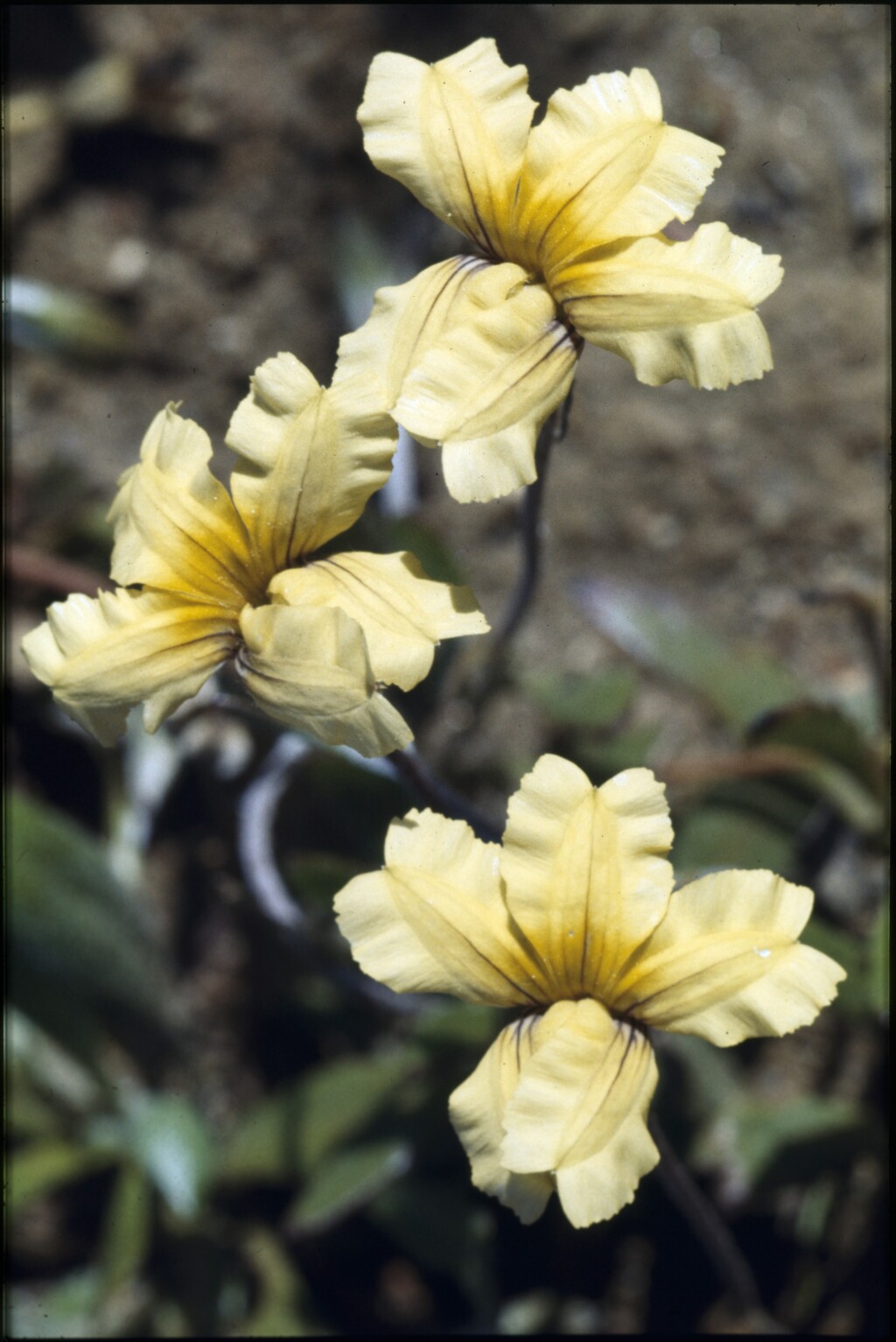Goodenia lanata
R.Br. Trailing GoodeniaProstrate or decumbent perennial; stems to c. 50 cm long, with soft, silver-grey hairs. Basal leaves obovate to lyrate, 1–8 cm long, 5–20 mm wide, acute or obtuse, both surfaces usually pubescent at least when young, sometimes glabrescent at maturity, margins usually shallowly dentate, rarely deeply lobed, base attenuate into an indistinct petiole; cauline leaves smaller. Inflorescences terminal leafy racemes to 20 cm long, or flowers solitary in axils; peduncle 2–6 cm long, often geniculate at bracteoles at anthesis; pedicels non-articulate, 10–40 mm long; bracteoles linear, 3–5 mm long. Sepals narrow-elliptic, 5–6 mm long, 2–3.5 mm long, variably covered with strigose and sometimes finer, curled hairs; corolla 10–15 mm long, pubescent outside and inside, yellow, abaxial lobes 5–6 mm long, wings c. 2 mm wide; indusium broad-oblong, slightly folded; ovules 10–12. Fruit ovoid to cylindric, 6–7 mm long, valves deeply bifid; seeds elliptic, 2–3 mm long, papillose, yellowish, wing vestigial. Flowers mainly Sep.–Mar.
Wim, GleP, VVP, VRiv, GipP, OtP, WaP, Gold, CVU, GGr, DunT, NIS, HSF, HNF, OtR, Strz, HFE, VAlp. Also SA, Tas. Scattered in heathlands, heathy woodlands and open-forests, mainly across southern Victoria west from the Strzelecki Ranges, with isolated inland occurrences near Chiltern, Seymour and Rushworth. A form with pronouncedly lyrate or even pinnatifid leaves has been collected from near Creswick.
Jeanes, J.A. (1999). Goodeniaceae. In: Walsh, N.G.; Entwisle, T.J., Flora of Victoria Vol. 4, Cornaceae to Asteraceae, pp. 589–615. Inkata Press, Melbourne.
 Spinning
Spinning
